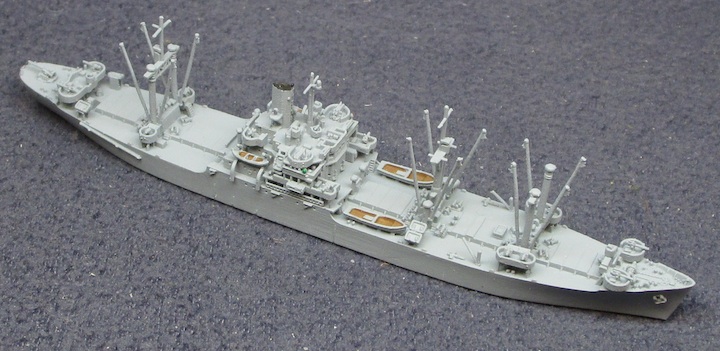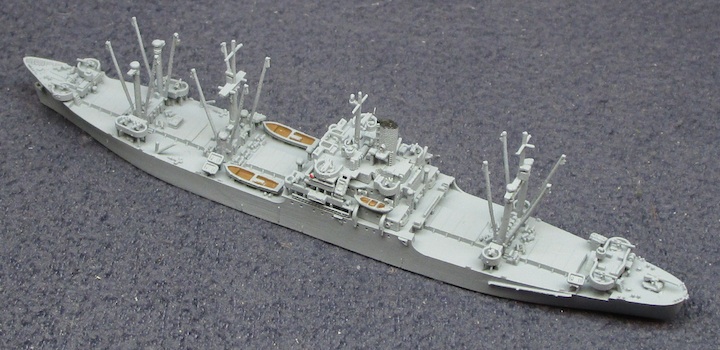USS Mount Hood
AE-11

1944
(Spider Navy SN-2-20)
- Class: Mount Hood - 8 ammunition ships of 1943
- Displacement: 13,910 tons full load
- Dimensions: 459'2" x 63'" x 28'3"
- Machinery: 1 General Electric steam geared turbine, single screw, 6,000shp = 16 knots
- Armament: 1-5"/38, 4-3"/50, 4-40mm AA (2x2), 10-20mm AA guns
- Complement: 318
- Builder: North Carolina Shipbuilding Co, Wilmington, NC
- Keel Laid: 28 Sep 1943
- Launched: 28 Nov 1943
- Commissioned: 1 Jul 1944
- Notes: Laid down as SS Marco Polo, a Maritime Commision type C2-S-AJ1 hull, before being acquired by the Navy. Renamed Mount Hood (AE-11) 10 Nov 1943. Converted to an ammunition ship by Norfolk Shipbuilding & Dry Dock Co, Norfolk, VA, and the Norfolk Navy Yard.
Following an abbreviated fitting out and shakedown period in the Chesapeake Bay area, Mount Hood reported for duty to Commander, Service Force, Atlantic Fleet, on 5 Aug 1944. Assigned to carry her vital cargos to the Pacific, she put into Norfolk, where her holds were loaded. On 21 Aug, as a unit of Task Group (TG) 29.6, she departed for the Panama Canal, transited the isthmian waterway and continued on, independently, toward what would be her ultimate destination, Manus, in the Admiralty Islands. Proceeding via Finschafen, New Guinea, she reached Seeadler Harbor, on 22 Sep, and, as a unit under Commander Southwest Pacific Area, commenced dispensing ammunition and explosives to ships preparing for the Philippine offensive.
On 10 Nov 1944, Mount Hood, anchored in about 19 fathoms of water, exploded with an estimated 3,800 tons of ordnance materiel on board. The initial explosion caused flame and smoke to shoot up from amidships to more than masthead height. Within seconds, the bulk of her cargo was set off with a more intense explosion. Mushrooming smoke rose to 7,000 feet, obscuring the ship and the surrounding area for a radius of approximately 500 yards. The force of the explosion blasted a trough in the harbor floor longer than the length of a football field and 50 feet wide and 30 to 40 feet deep; some fragments landed more than 2,000 yards from where Mount Hood lay. Investigators found no fragment of the ship on the ocean floor larger than 16 by 10 feet.
The concussion and metal fragments caused casualties and varying degrees of damage to ships and small craft within 2,000 yards, including two CVEs, one DD, four DEs, destroyer tender Piedmont (AD-17) and auxiliary Argonne (AG-31). Most seriously damaged was repair ship Mindanao (ARG-3) which suffered 23 dead and 174 injured. Everyone aboard Mount Hood was killed; the only survivors of the crew were a shore party of 18 men.



 Previous
Previous
 Up
Up
 Next
Next





 Previous
Previous
 Up
Up
 Next
Next